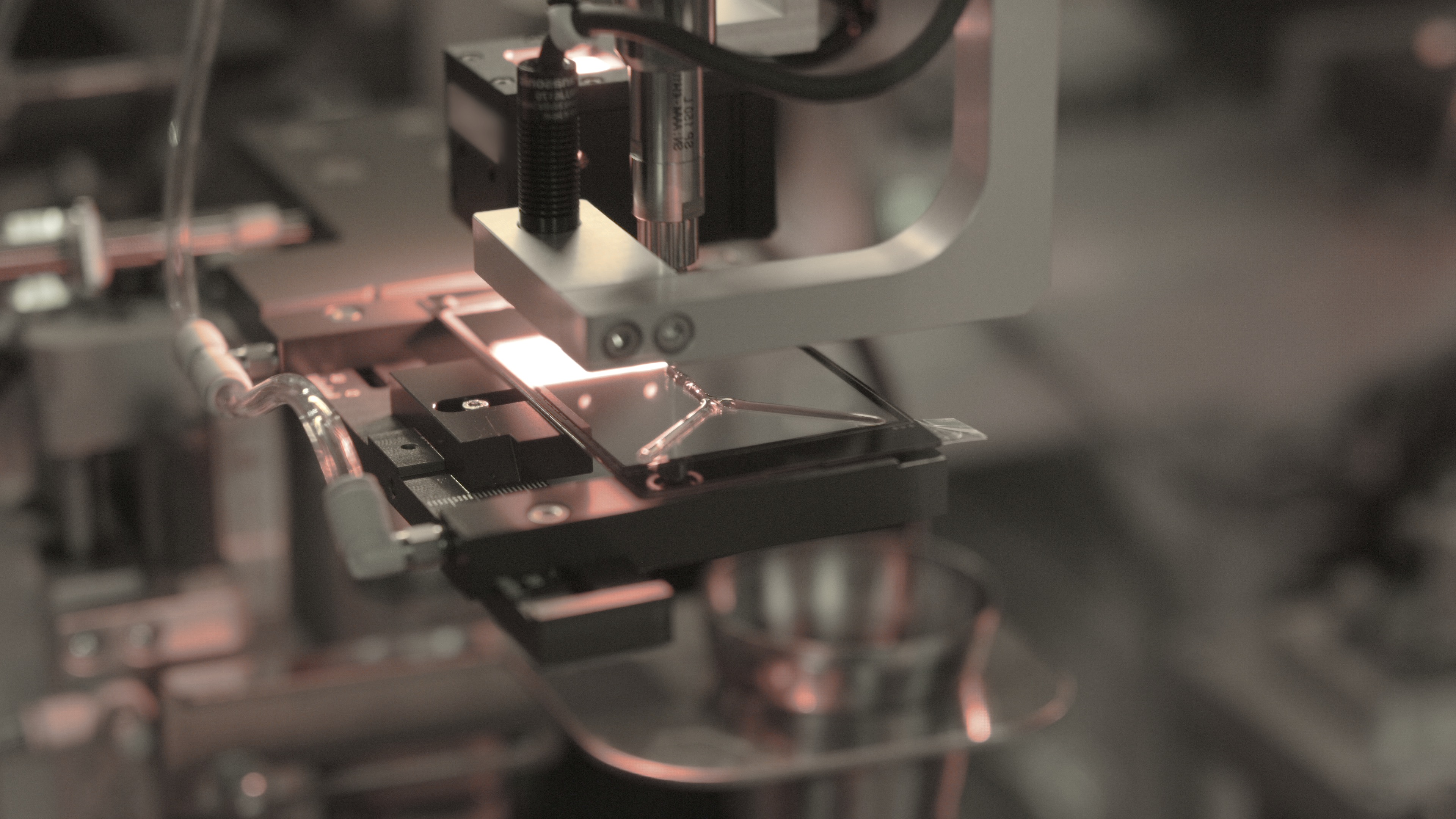Display brilliance with optical bonding
The Color Brilliance and Optical Quality of a Touchscreen: A Key Advantage in Today's Market
In today's competitive market, where first impressions are everything, the visual appeal and performance of touchscreens play a crucial role in product success. A high-quality display can make the difference between a product that stands out and one that blends into the background. Interelectronix understands this need for exceptional visual performance and utilizes advanced optical bonding techniques to ensure the highest quality touchscreens. Optical bonding is a sophisticated process that not only enhances visual clarity but also improves the durability and longevity of touchscreens, making them ideal for a variety of demanding applications. Our extensive experience and commitment to excellence position Interelectronix as a leader in this technology.
Achieving Superior Optical Results with Optical Bonding
Optical bonding is a cutting-edge manufacturing process that involves bonding a touch sensor to a glass plate using a highly transparent liquid adhesive. This method eliminates air gaps between the components, significantly enhancing the optical quality of the touchscreen. The absence of air gaps reduces light refraction and increases contrast, resulting in lower reflection and better readability, even under challenging lighting conditions.
The process of optical bonding demands precision and expertise to ensure that no air bubbles are trapped during the bonding of the components. Interelectronix has mastered this technique, delivering touchscreens with unparalleled clarity and brightness. The benefits of optical bonding extend beyond just improved visuals; the bonded display is also more robust, making it resistant to mechanical stress and environmental factors.
Eliminating Condensation for Enhanced Performance
One of the significant advantages of optical bonding is its ability to prevent condensation. By filling the air gap between the glass pane and the touchscreen with a highly transparent adhesive, moisture penetration is effectively blocked. This prevention of condensation is crucial for maintaining the touchscreen's performance and longevity, particularly in environments with fluctuating temperatures and humidity levels.
Furthermore, the elimination of the insulating air gap improves heat dissipation. This enhanced heat management contributes to the overall longevity of the electronic components, ensuring that the touchscreen remains functional and reliable over extended periods. The improved robustness against external influences, combined with better heat dissipation, makes optical bonding an excellent choice for applications requiring high durability and reliability.
Proven Technology with Military Roots
Optical bonding technology has its origins in military applications, where the need for rugged, reliable displays is paramount. This technology has since transitioned to commercial markets, offering high-quality touchscreens for a range of demanding uses. Despite its complexity, the benefits of optical bonding are clear, making it a preferred choice for many manufacturers seeking superior display quality.
Interelectronix leverages its extensive experience in optical bonding to produce touchscreens that meet the highest standards of quality and performance. Our commitment to using the best materials and techniques ensures that our customers receive products that excel in both form and function. While many manufacturers opt for simpler fastening methods, our dedication to excellence drives us to perfect the optical bonding process, delivering touchscreens that stand out in the market.
Enhanced Optics and Reduced Reflection
Traditional touchscreen production processes often leave a small gap between the front glass and the sensor film, which can diminish color brilliance and optical clarity. Optical bonding, on the other hand, uses highly transparent, index-matched adhesives that create a seamless bond between the glass and the sensor. This results in a much clearer display with vibrant colors and excellent optical quality, even in low light conditions.
The improved optical performance is especially beneficial in applications where readability is critical, such as medical devices, outdoor displays, and automotive interfaces. The reduced reflection achieved through optical bonding ensures that the screen remains visible and legible, regardless of the lighting environment. This enhancement in visual quality not only improves user experience but also adds significant value to the product.
Boosting Robustness for Harsh Environments
In addition to enhancing optical quality, optical bonding significantly improves the durability of touchscreens. The full-surface, gap-free bonding of the glass to the touchscreen and display creates a laminated effect, making the screen more resistant to vibrations, shock waves, and thermal stresses. This increased robustness makes optical bonding ideal for touchscreens used in harsh environments, such as industrial settings, military applications, and outdoor installations.
The enhanced durability provided by optical bonding ensures that the touchscreen can withstand the rigors of daily use in demanding conditions. Whether it's exposure to extreme temperatures, physical impacts, or constant vibrations, a bonded touchscreen maintains its integrity and performance. This reliability is crucial for applications where downtime is not an option, and durability is a key requirement.
Why Interelectronix?
Interelectronix's expertise in optical bonding sets us apart in the touchscreen market. Our commitment to quality and innovation drives us to continually refine our processes and deliver products that exceed customer expectations. By choosing Interelectronix, you gain access to touchscreens that offer superior optical performance, enhanced durability, and longer lifespans, making them a valuable addition to any product.
Our extensive experience in optical bonding ensures that we can meet the specific needs of various industries, from medical devices to military applications. We understand the unique challenges and requirements of different markets and tailor our solutions to provide the best possible results. If you're looking for touchscreens that combine brilliant color, exceptional optical quality, and robust durability, Interelectronix is your trusted partner.
Explore the advantages of optical bonding with Interelectronix and discover how our touchscreens can elevate your product to new heights. Contact us today to learn more about our optical bonding technology and how we can help you achieve the best possible optical results for your touchscreens.
